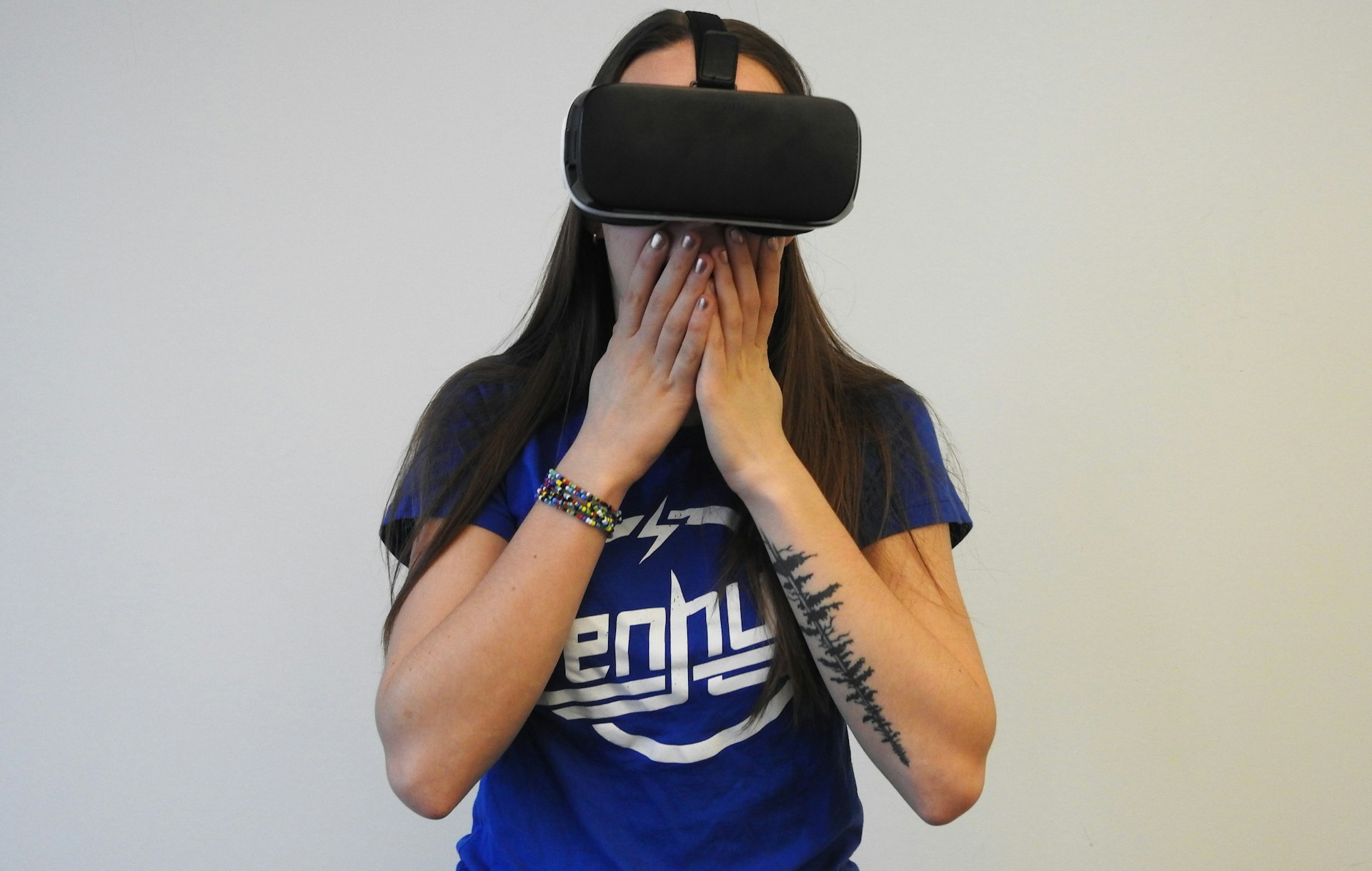Empowering Special Needs Education Through Virtual Reality: Proven Strategies, Real Benefits, and Accessible Solutions


Photo by Hammer & Tusk on Unsplash
Introduction: Transforming Special Needs Education with Virtual Reality
Virtual reality (VR) has emerged as a powerful tool in special needs education, offering innovative solutions to challenges faced by students with learning difficulties, physical disabilities, and sensory impairments. By creating immersive, safe, and adaptive environments, VR can support individualized learning, foster engagement, and help students develop crucial academic and life skills. This article explores the evidence-based benefits of VR for special needs learners, provides actionable guidance for accessing and implementing these technologies, and examines real-world case studies illustrating its transformative impact.
Key Benefits of Virtual Reality in Special Needs Education
Extensive research and practical experience highlight several core benefits of VR for students with special educational needs:
1. Personalized, Adaptive Learning Environments
VR enables educators to tailor experiences to each student’s unique needs, abilities, and interests. For learners with cognitive or emotional disorders, VR can provide calming, familiar environments that reduce anxiety and increase motivation. For example, a student who relaxes when near horses can benefit from a virtual experience featuring these animals, helping regulate emotions and enhance focus during lessons [5] .
2. Enhanced Knowledge Retention and Engagement
Studies show that VR increases knowledge retention and boosts engagement by presenting information in visually compelling, interactive formats. This approach is especially beneficial for students with language-based learning disabilities, such as dyslexia, who may struggle with traditional text- or lecture-based instruction. VR transforms abstract concepts into tangible, visual experiences, supporting better understanding and recall [1] .
3. Safe Practice and Skill Development
Through virtual simulations, students with autism, anxiety, or physical disabilities can practice social interactions, daily living skills, and academic experiments in controlled environments. For example, VR training programs have shown significant improvements in social skills for students with autism compared to traditional methods. The ability to pause, repeat, and adjust scenarios ensures each learner progresses at their own pace and builds confidence [2] [3] .
4. Overcoming Physical Barriers
Students with physical disabilities often encounter obstacles accessing traditional laboratories, outdoor activities, or distant field trips. VR removes these barriers by transporting learners to virtual environments where they can participate fully, regardless of mobility constraints. For example, VR science labs allow students with limited movement to conduct experiments using assistive devices, leveling the playing field and fostering inclusion [4] .
Practical Implementation: How to Access and Integrate VR in Special Needs Education
Integrating VR into special needs education requires careful planning, collaboration, and ongoing support. Educators, therapists, and families can follow these step-by-step guidelines to maximize benefits:
Step 1: Assess Student Needs and Goals
Begin by identifying individual learning objectives, challenges, and preferred modes of engagement. Consult with special education professionals, therapists, and families to determine which skills or experiences could be enhanced through VR.
Step 2: Explore Available VR Resources and Platforms
Many established VR platforms offer content specifically designed for special education. For example, ClassVR provides curated experiences for learners with diverse needs [1] . When exploring potential solutions, consider the following:

Photo by stem.T4L on Unsplash
- Compatibility with existing devices and assistive technology
- Content relevance for targeted skills (e.g., social, emotional, academic, mobility)
- Accessibility features such as audio cues, tactile feedback, and adjustable interfaces
If unsure which platforms to choose, consult with your local school district’s special education department, occupational therapists, or technology coordinators for recommendations.
Step 3: Secure Funding and Support
VR implementation may require investment in hardware (headsets, controllers) and software licenses. Schools and families can pursue support through:
- Special education grants (search “special education technology grants” on official education department websites)
- Nonprofit organizations supporting assistive technology (e.g., contacting your local chapter of the American Association of People with Disabilities)
- District technology budgets and PTA fundraising initiatives
For official grant programs, visit the U.S. Department of Education’s website and search for “assistive technology grants.” If you need help, consult your school’s special education coordinator for guidance.
Step 4: Train Educators and Staff
Effective VR integration depends on knowledgeable staff. Many VR providers offer training modules and webinars. If these are unavailable, consider contacting regional education service centers or universities with special education programs for professional development opportunities.
Step 5: Implement and Evaluate VR Experiences
Start with pilot programs, monitor student engagement and progress, and collect feedback from students and families. Adjust content and approaches based on outcomes to ensure continued relevance and effectiveness. Regularly review new VR offerings and research to stay updated on best practices.
Challenges and Solutions in Using VR for Special Needs Learners
While VR offers tremendous promise, educators and families may encounter obstacles such as cost, technical limitations, and content suitability. Solutions include:
- Cost: Seek grant funding, collaborate with local organizations, and explore refurbished equipment options.
- Technical Complexity: Engage IT specialists for setup and troubleshooting. Use platforms with intuitive interfaces designed for special education.
- Content Suitability: Evaluate VR modules for age-appropriateness, accessibility, and alignment with learning goals. Request trial versions before investing.
- Student Sensitivities: Monitor for sensory overload or discomfort and adjust settings as needed.
Alternative approaches may include using augmented reality (AR) applications, which often require only a tablet or smartphone and can provide accessible, interactive experiences with lower costs and easier setup [4] .
Case Studies and Real-World Applications
Numerous projects and studies demonstrate the effectiveness of VR in special needs education. For instance:
- Social Skills Training for Autism: The University of Texas found that VR-based social skills training led to measurable improvements in peer interaction among students with autism compared to traditional approaches [3] .
- Science Experiments for Physical Disabilities: The University of Central Florida designed a virtual lab enabling students with mobility limitations to conduct experiments using assistive devices, overcoming barriers posed by physical labs [3] .
- Spatial Learning for Visual Impairments: Researchers at the University of Kent used AR with tactile markers and audio cues to help visually impaired students develop orientation and spatial awareness skills [3] .
These examples underscore how VR and AR can create inclusive learning environments that empower all students to succeed.
Next Steps: How to Get Started with VR in Special Needs Education
If you are an educator, parent, or administrator seeking to introduce VR into your special needs education program, consider these actionable steps:
- Identify specific learning challenges or goals that could benefit from immersive, interactive experiences.
- Research and evaluate VR platforms with proven special education modules (such as ClassVR or TherafyCare). Contact vendors for demos and training resources [1] [2] .
- Collaborate with your school’s special education team to create individualized implementation plans.
- Seek funding through education grants, local nonprofits, or district budgets. Visit the U.S. Department of Education’s official site for “assistive technology grants” or consult your district’s grant coordinator.
- Provide professional development for staff to ensure confident, effective use of VR technologies.
- Monitor outcomes, gather feedback, and iterate to improve student experiences and learning results.
For additional guidance, reach out to your school district’s technology coordinator, local education service agency, or regional universities with expertise in special education technology.
References
- [1] ClassVR (2025). The Role of VR in Special Education.
- [2] TherafyCare (2024). Virtual reality for special education.
- [3] CAHELP (2022). VR and AR in Special Education.
- [4] American SPCC (2023). Overcoming Physical Disabilities: AR & VR in Special Education.
- [5] PMC (2023). Exploring the Opportunity to Use Virtual Reality in Special Needs Education.






